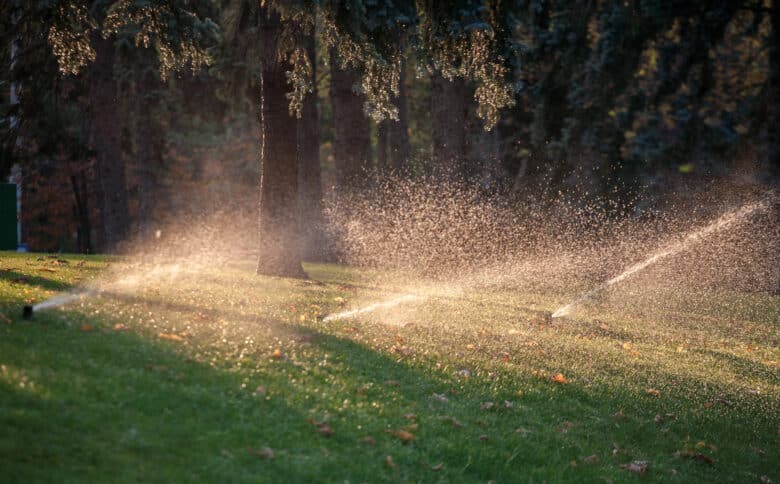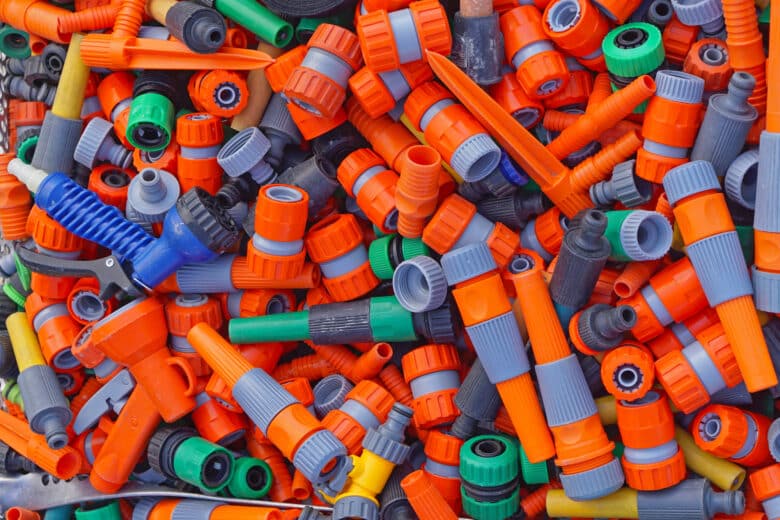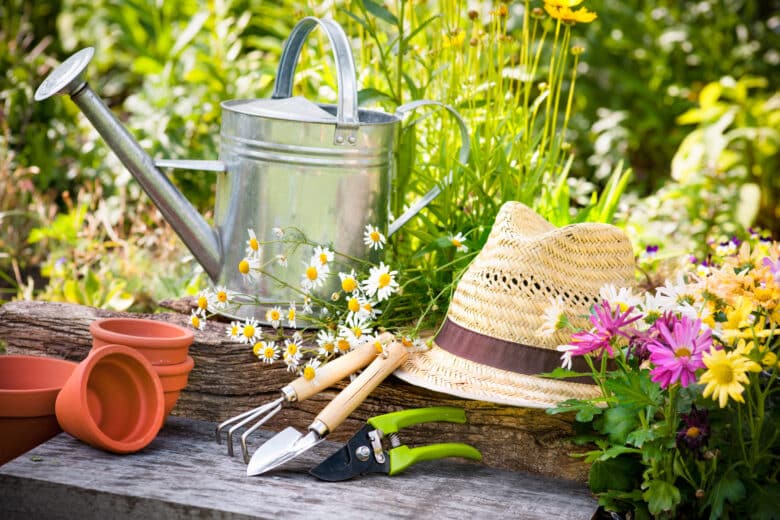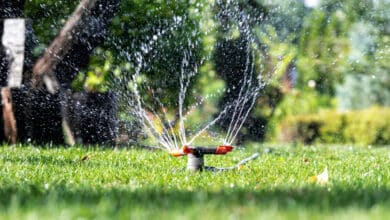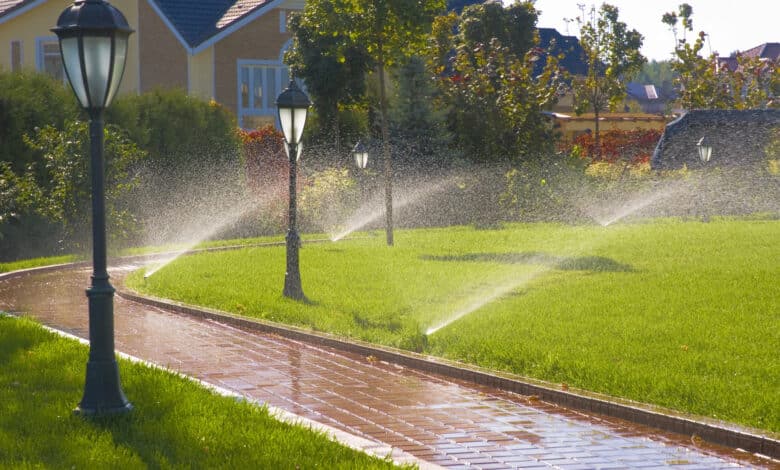
Smart irrigation systems are a modern and efficient solution for watering gardens optimally. They not only save water, but also time and energy. However, there are some important factors to consider when buying such a system. Our guide to irrigation systems is designed to help you make the right decision.
- Spoilt for choice? We have compiledthe best irrigation systems from 2024 for you
Guide to irrigation systems: Type of system
There are different types of smart irrigation systems, which vary depending on garden size, plant type and individual needs.
Drip irrigation
As the name suggests, drip irrigation ensures that plants are watered rather sparingly. But that’s not all. The path of the water is also significantly shorter here.
The water does not fly through the air, but pours directly onto the ground. This allows it to reach the roots directly, which is ideal for watering beds and rows of plants.
Sprinkler irrigation
The most common method of automated irrigation is probably sprinkler irrigation. A lawn sprinkler is used here, which is designed to water uniform areas by means of rotary or rotating movements.
A rain shower is simulated to a certain extent through the air path of the water. Sprinkler irrigation is perfect for large lawns.
Underground irrigation
Underground irrigation is quite complex, but also effective and visually inconspicuous. Here, hoses are distributed underground to ensure an even supply of water to plants and lawns.
The great advantage of this method is particularly evident in extremely hot regions. As there is no direct sunlight and heat effect on the water, there is significantly less evaporation. This in turn saves water.
Irrigation systems guide: Sensors and automation
Smart irrigation systems can be equipped with various sensors that automatically control the irrigation system. These can measure the soil moisture, for example. As the good old motto “a lot helps a lot” does not apply when watering lawns or plants, you should not always water extensively. Ideally, you should act when necessary. This not only saves water, but also ensures optimum care for plants and lawn.
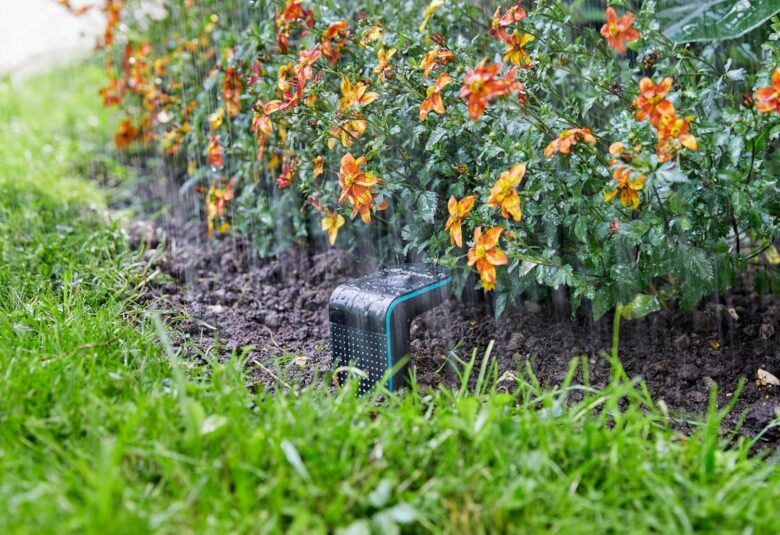
One of the most important parameters is certainly soil moisture. Irrigation systems with a soil moisture sensor always know exactly when water is needed and when the water meter can take a break. If the soil is too dry, there is an extra portion of cool water. If, on the other hand, it is soaked by continuous rain anyway, the tap automatically remains closed. Models with sensors for solar radiation are in a similar vein.
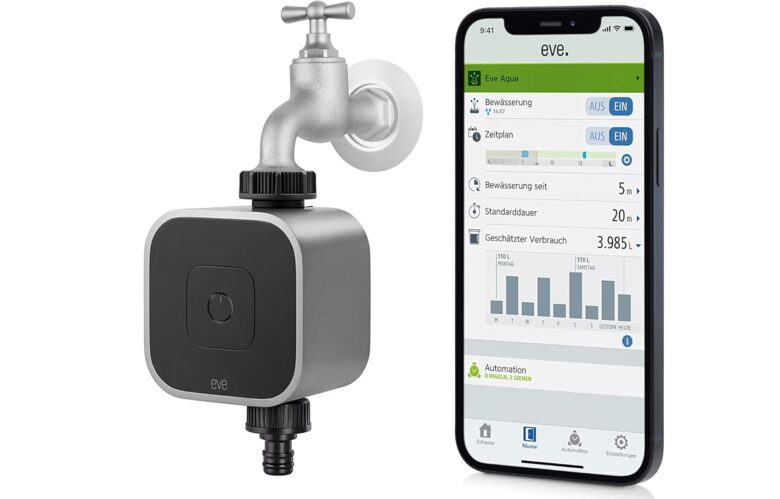
If the glowing stars are at their zenith and endanger the healthy green of the lawn, the solar radiation sensor can register this. As a result, the amount of water is optimized. Systems with weather data integration work more predictively. For example, if the weather forecast predicts cool temperatures coupled with rainy weather, sprinklers and the like will not be used. In dry heat, on the other hand, it’s “water on!”.
Irrigation systems guide: Connectivity and control
Smart homes have of course long since arrived in our gardens. So it’s not surprising that even irrigation systems are now connected to smartphones and the like. The majority of providers offer a suitable app with their flagship models. Here you can conveniently control the irrigation remotely. But be careful: Just because an irrigation system can be operated via an app does not automatically mean that it can be operated from anywhere.
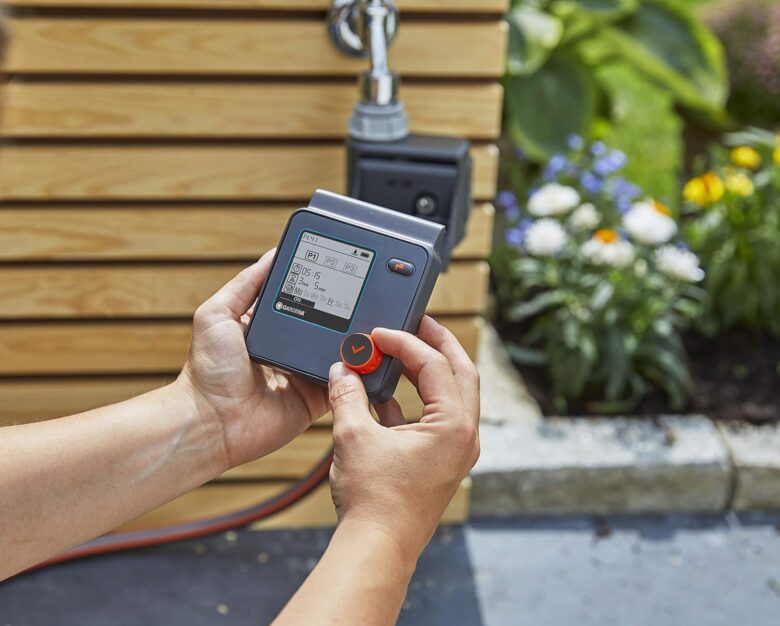
Here you need to pay attention to how the smartphone connects to the system. If only a Bluetooth connection is possible, remote control is only possible within range of the system. As a rule, this is limited to the home and garden. If you want to have access to the system while on vacation or at work, make sure that there is a WiFi module on board. This enables the irrigation system to independently access the home network and therefore also the internet.

So it can always be reached by the user. Models with an internet connection generally not only offer control via the app. Support for common voice assistants is now also commonplace with these flagship models. If you want to control your irrigation system via Amazon Alexa or the Google Assistant, you should also look out for corresponding support.
Irrigation systems guide: Installation and maintenance
An automated irrigation system should provide one thing above all: convenience. And ease of use starts with the installation and commissioning of the system. After all, you don’t necessarily want to have to call in professional help for this step, which in itself costs money. It is now possible to install many systems yourself. But there are also set-ups that are better left to a professional.
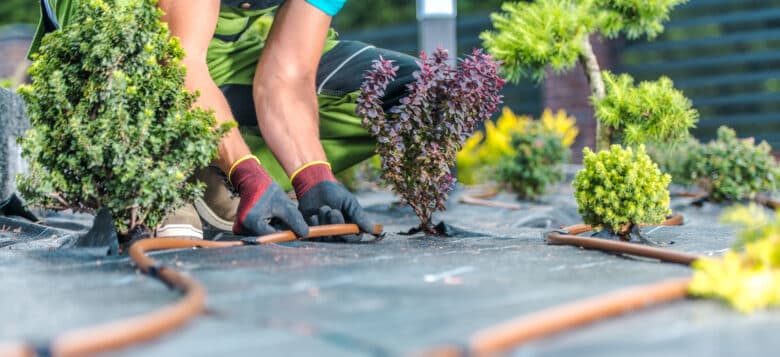
Especially with underground systems, it can be frustrating if you try to install it yourself without success and then fail miserably. This not only scratches your own ego, but often results in a destroyed lawn or even an entire garden. So before you rush into it, you should know whether you can really install the system yourself. If professional help is required, this must be factored into the cost calculation.

.
In order to enjoy the system for as long as possible and to keep plants and lawns gloriously green, you also need to think about extensive maintenance. In particular, nozzles and the superficial plug connections should be checked regularly. For smart systems with sensors, it is also important that the sensors are always cleaned. This effectively prevents incorrect measurements, which can result in incorrect watering.
Irrigation systems guide: Compatibility with existing infrastructure
Anyone who has just built a new garden or wants to completely redesign their garden should think in advance about which manufacturer the system should come from. After all, a coherent system with elements from the same manufacturer is always an advantage. This ensures compatibility between the individual components. However, if you want to upgrade your garden and already have an irrigation system, you should make sure that the new extensions are compatible with the existing system.
Fortunately, this is almost always the case if you are not using a system that is too old. After all, it is important to manufacturers of smart irrigation solutions that their own technology can be integrated into existing systems without any major problems. However, there is no absolute certainty here, which is why you should check in advance whether old and new components really do fit together. Otherwise, you will have to resort to workarounds such as adapters. This not only incurs additional costs, but usually also makes installation more difficult.
Irrigation systems guide: Price and quality
The price of a smart irrigation system varies greatly depending on the range of functions and quality. It is therefore not possible to make any general statements here. While inexpensive systems often offer basic functionality, more expensive models are often more durable and offer advanced functions such as better integration into smart home systems or more detailed control.
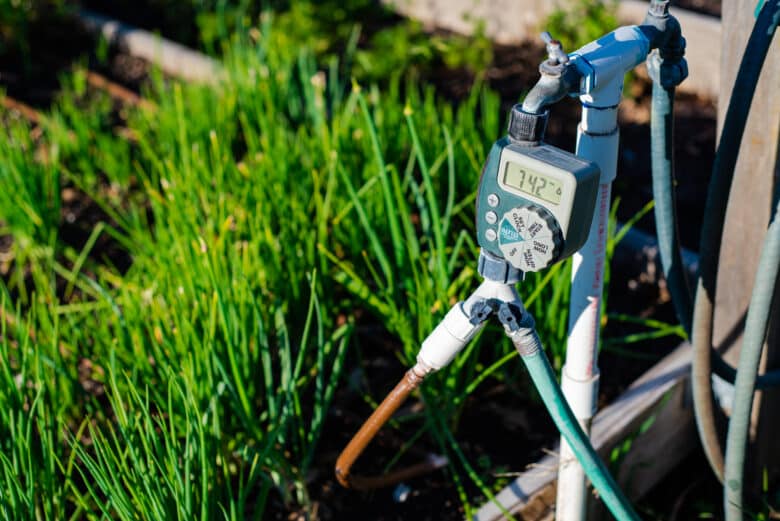
.
It is important that you set yourself a budget in advance. When calculating this, you should not only bear in mind the costs for the system itself. Additional costs should also be taken into account. Professional help may be needed, especially for complex structures that are at least partially underground. If you don’t have any professionals in your circle of friends, you will have to reckon with additional labor costs.

.
The energy consumption of the system should also be taken into account when making a selection. Some irrigation systems are powered by batteries, others even require a power connection. Pay attention to the running time and energy requirements of the system in order to calculate long-term costs. With particularly water-saving systems, you not only reduce your water bill, but also protect the environment.
Conclusion
Smart irrigation systems are an efficient solution for optimal garden irrigation that saves time, water and energy. Automations with sensors for soil moisture and solar radiation as well as the integration of weather data help to optimize water consumption and ensure convenience. It is important to select the right system to suit the garden infrastructure and your own requirements. Modern systems can often be controlled via an app or voice assistant, with the type of connectivity (Bluetooth or WiFi) determining the range of control.
Depending on the system, installation should be carried out by yourself or by a professional, especially for underground solutions. In addition to the purchase price, costs for installation, maintenance and energy consumption should also be taken into account. High-quality systems often offer advanced functions, are more durable and integrate better into smart home systems. Ultimately, a well-chosen irrigation system not only saves water and costs, but also ensures a healthy, well-tended garden in the long term.

